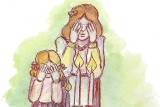 By Yosef Brecher
By Yosef Brecher
How can we still fulfill the mitzvah of hadlokas nairos if our homes are already fully illuminated by electricity?
As we have mentioned previously (Hadlokas Nairos, Part 4), there are two basic reasons for the mitzvah of hadlokas nairos: Kavod Shabbos (it is an honor for Shabbos to eat the seuda with adequate lighting), and Shalom Bayis (proper lighting ensures an atmosphere of tranquility within the home). Both of these reasons, though, seem directly tied to the fact that the Shabbos candles give light to otherwise dark room. How then can we still recite a bracha and fulfill the mitzvah of hadlokas nairos when our Shabbos candles do not add any meaningful light to our homes? The following are a few of the approaches given.
(1) The first approach is related to last week’s discussion of whether multiple women can light candles together on one candelabra. As we mentioned, there is a disagreement in this case: The Shlah holds that a woman can only fulfill the mitzvah of hadlokas nairos if the candles she is lighting are causing a perceivable increase in light. Therefore, two women cannot light the same candelabra, as the second woman’s candles are not necessary. The Elya Raba argues and holds that a woman can fulfill hadlokas nairos with any additional candles, even if those candles do not cause any obvious increase in light. Therefore, if two women light candles on the same candelabra, they have both fulfilled their individual obligations of hadlokas nairos. There are those that suggest that the opinion of the Elya Raba can serve as a justification for lighting Shabbos candles in a room that is already lit by electricity. Although you cannot see the effect the candles are having in the room, the candles can nevertheless serve as a fulfillment of hadlokas nairos. This approach is problematic, though, because, as we mentioned, the Mishna Berura writes that we should not rely on the above opinion of the Elya Raba but rather on that of the Shlah who maintains that a woman’s candles must be obviously adding light to the room.
(2) Rav Moshe Feinstein (Igros Moshe O.C. Chelek 1, 20:30) takes another approach in explaining how we can light candles in a room that is already lit by electricity. Rav Moshe writes that if one were to have an electrical outage in his house on Shabbos, the Shabbos candles would be the only source of light in the home. Since an outage is a possibility – albeit an improbable one – perhaps we can view the Shabbos candles as a necessary part of ensuring that there is adequate lighting in the home. Rav Moshe explains that although it is probable that this need would not have been important enough to establish the mitzvah of candle lighting in the first place, it is still a strong enough reason to maintain a practice that has already been established by the Chazal.
(3) The Shmiras Shabbos Kehilchaso (chap. 43 note 171) cites another approach from Rabbi Shlomo Zalman Aurbach. Rav Aurbach explains that perhaps since Chazal established a mitzvah to light Shabbos candles, these candles have become a symbol for kavod Shabbos and everyone who sees them can instantly recognize their purpose. As a result, although the candles we light are not causing kavod Shabos by adding actual light to the room, they still cause kavod Shabbos just by the honor and happiness that they cause by their very presence (see, however, the Be’air Moshe (chelek 5, 114:7) who quotes a similar opinion and argues strongly against it).
(4) The Sefer Kavod V’Oneg Shabbos cites another explanation given by the Klausenberger Rebbe. We light candles to give honor to Shabbos just as we light candles if an important person visits our home. This gesture can be accomplished even if the candles that are lit do not actually add light to the room. See also the Smag (Mitzvas Asay 30) who writes – regarding the mitzvah to light Shabbos candles – “lighting beautiful candles are the main honor [for Shabbos].” Perhaps these words of the Smag can be interpreted as a support for the approach of the Klausenberger Rebbe. The Kavod Shabbos is created by the beautiful candles themselves rather than from the light they produce.
The purpose of this column is not to render halachic decisions, but rather to provide readers with a helpful overview of basic hilchos Shabbos. All specific halachic inquiries should be directed to a local halachic authority. General questions about the content being discussed, however, are welcome and can be sent to: [email protected].
©2013 Yosef Brecher
{Matzav.com Newscenter}











My father ZTL had my mother close and open the dining room lights before Hadlokas Neiros and have in mind that the Berocha should go on them as well. (The lady is only mekabel Shabbos after she lights the candles – which is a different discussion).
I believe I saw this in the name of someone from the Soloveitchik family as well.